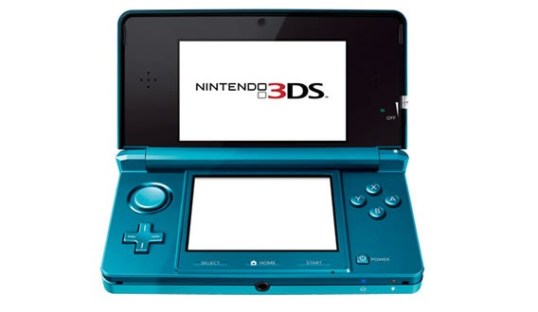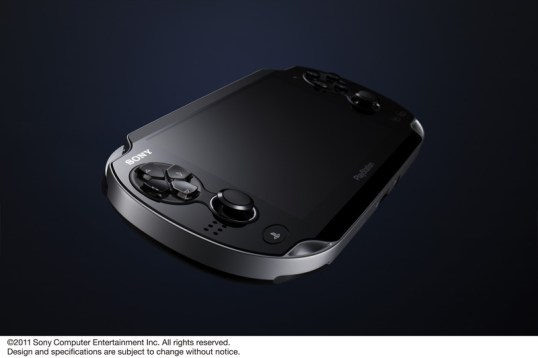In the eternal struggle to win over gamers’ thumbs on the go, Nintendo’s been the uncontested champ for decades now. The only other dedicated gaming device to ever mount a worthy challenge has been Sony’s Playstation Portable. Just a week after Nintendo announced its launch plans for their new 3DS, Sony pulled away the veil of secrecy from their Next Generation Portable or NGP. But, we can’t forget that the landscape’s changed significantly with the rise of smartphones with robust technology and game catalogs. These new handhelds by Sony and Nintendo will jockey for market share alongside the ever-growing Android device population and the inevitable new iOS hardware doubtlessly coming from Apple coming this year. With all this activity, it’s worth thinking about the pros and cons for each platform.
3D visuals
Stereoscopic presentation is obviously the main selling point of the Nintendo 3DS. Nintendo of America president Reggie Fils-Aime called the company’s new hardware “a category of one,” making the point that no other gadget will be capable of showing of 3D content. Many are still skeptical as to how 3D will ever enhance gameplay but the chance to watch movies and TV shows without glasses will surely appeal to some of the people who shell out for the experience at multiplexes.
Meanwhile, Sony made no announcement with regard to 3D on their handheld. Still, the PlayStation division is part of a larger company, one that also happens to make 3DTVs. It’s been stated that Sony views 3D gaming as a big priority so it wouldn’t be beyond the pale for them to implement some sort of stereoscopy–either with or without glasses–into a NGP and charge a premium price for it.
Also, it’s entirely possible that any of the buzzed-about 3D Android phones might have a killer game that uses stereoscopy in a clever way. But for now, Nintendo’s the company with a 3D handheld while the content that lives on Sony’s portables and other platforms stays stuck in two dimensions.
Advantage: Nintendo
Software development and distribution
The thing that truly builds a user base for gaming machines big and small is the software. Nintendo and Sony have the advantage of strong first-party IP and great relationships with entities such as EA, Activision and UbiSoft, and have shown off big titles from major publishers. Super Street Fighter IV 3D, Madden NFL and Konami’s Pro Evolution soccer titles make up part of the games slate Nintendo will roll out with the 3DS, while Sony teased fans with promises of installments of the mega-popular Call of Duty and Metal Gear Solid franchises, along with a portable version of its own first-party hit Uncharted.
However, Apple’s low barrier to entry for iOS development has enabled hordes of programmers, designers and coders to populate the App Store with surprising and innovative games. Google’s followed a similar strategy with Android, too, and they’re getting a boost with the announcement of official Playstation content coming to their marketplace. Angry Birds couldn’t have happened with the licensing and approval structure that Sony and Nintendo have traditionally had in place. Even as handheld devices with gaming capabilities begin to replicate functionality–multiple cameras, touchscreens, motion-sensing, persistent wireless connectivity– the respective creative culture around each platform matter more and more. How easy is for developers to get onto your platform and how easy it will be for users to parse the content that lives there will be as important tech specs.
Sony and Nintendo have relied on proprietary physical media like UMDs and cartridges for years and part of the reason for that has been to try and lock out those who’d abuse the tech of the systems. But that reliance makes both companies’ models more inflexible than Apple or Google’s purely digital methods. Right now, Apple wins because they can wield the surprise of an indie-generated hit as well as efforts from established companies like Capcom or Activision.
Advantage: Apple
Connectivity
WiFi’s pretty much standard for any mobile device at this point. It’s Street Pass is what Nintendo’s calling their passive communication mode for the 3DS. It’s supposed to let you interact with other units even while the 3DS is off or otherwise occupied. Near on Playstation NGP sounds like it’s got some things in common with it but there’s no sign about just how flexible it’s going to be.
Cellular capability’s a realm that gaming-centric handhelds are just beginning to dabble in and the 3G option on the Sony NGP could open up location-specific game designs that exist in some form on iOS or Android. Of course, most smartphones already have a cellular/WiFi combo baked in. So, one could argue that the key differentiator will be speed. Android’s the clear leader here, with multiple phones on 4G networks.
Control options
The most interesting element of the NGP’s architecture is the combination of a front and back touchpad. It seems that Sony may be trying to add an element of depth to the kinds of touchscreen controls that have become ubiquitous in recent years. Reports from the PlayStation Meeting event said that one game had a user pushing a ball ‘through’ the back of the NGP onto the screen. Such a feature could lead to some mind-warping game design ideas.
While the 3DS finally adds gyroscope and accelerometer sensors to the DS family, such features have become common in most smartphones. Outside of the new movement-sensing options, the 3DS adds an analog nub to complement the touchscreen/stylus input, d-pad and face/shoulder buttons. Most smartphones at present feature some mix of touchscreen, QWERTY and/or control pad. I think the nod here has to go to the NGP. It give developers to ability to mix and match analog and touch in interesting ways, and two touch-sensitive areas could lead to even more interesting ideas.
Price
Nintendo recently announced that the 3DS will launch at $250 in the United States. It’s a price point that’s raised some eyebrows, coming in at more than $60 more than the first DS when it debuted. For a similar expense, you can score an iPod Touch, which boasts a formidable library of games will also doubling as a first-rate communications and productivity platform. In typical Sony fashion, we don’t yet know how much the wonder of the NGP is going to cost. Keep in mind, too, that Sony’s never been shy to charge consumers huge chunks of money for PlayStation products. Don’t forget that, at $199, Apple’s carrier-subsidized iPhone 4–and many Android smartphones–offers a ton of features that Nintendo and Sony won’t have. How much a person will spend depends on what they want a device for but the fierce competition ultimately means the consumer wins out.
Advantage: Draw
Wrap-up
Right now, it seems like Nintendo’s hitching its hopes to a trend. 3D may be driving lots of box office for Hollywood studios, but it remains to be seen it can do the same for TV manufacturers or content providers. Sony, by contrast, seems to be wanting to give players and developers a platform for hi-def gaming experiences that could move easily between NGP, PS3 and other devices. While Apple and Google aren’t directly devoting institutional resources to game development, they almost don’t need to, with the ecosystem that evolved around their platforms.



